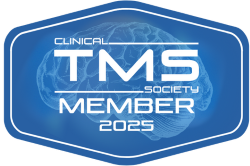
Megan Olejnik, LSW, therapist at Relief Mental Health in Rockford, Ill., provides EMDR therapy in addition to other therapeutic approaches.
There are many things that can affect mental health. Between family history, personal genetic makeup, environmental factors, and individual experiences, it can be difficult to pinpoint exactly why someone develops a mental illness and why another person does not.
However, medical professionals agree one thing dramatically increases vulnerability to and risk for developing mental health diagnoses: trauma. In fact, the Diagnostic and Statistical Manual of Mental Disorders, Volume 5 (DSM-5) has an entire category of diagnosis related to the effects of trauma. These diagnoses include:
- Post-traumatic stress disorder (PTSD)
- Adjustment disorder
- Reactive attachment disorder
- Disinhibited social engagement disorder
- Acute stress disorder
This list is not exhaustive as trauma can also lead to:
- Anxiety disorders
- Depressive disorders
- Major depressive disorder
- Bipolar disorder
- Personality disorders
- Borderline personality disorder
- Dissociative disorders
- Dissociative identity disorder
- Dissociative amnesia
- Depersonalization disorder
Trauma is painful and can create consequences that can last for long after the initial traumatic event. In some cases, the consequences of unresolved trauma can impact an individual for years – or even decades. That is one reason why it’s important to understand trauma; a traumatic event can have a disproportionate impact on our lives. In some cases, a traumatic experience can feel more debilitating than a major physical injury or illness.

What Exactly is Trauma?
The American Psychological Association (APA) defines trauma as:
“an emotional response to a terrible event like an accident, rape, or natural disaster. Immediately after the event, shock and denial are typical. Longer term reactions include unpredictable emotions, flashbacks, strained relationships, and even physical symptoms like headaches or nausea.”
The Adverse Childhood Experiences Study (ACE Study) identifies a variety of traumatic experiences including:
- Physical, emotional, or sexual abuse
- Physical or emotional neglect
- Domestic violence
- Divorce of parents
- Living with a person with a mental health or substance use disorder
- Experiencing racism and/or bullying
- Living in an unsafe neighborhood
- Witnessing violence
Evidence from the ACE study – and decades of subsequent confirmation – shows that experiencing four or more of the items on the list above increases individual risk of developing a variety of trauma-related diagnoses, including PTSD, depression, and anxiety. It is important for a person with a history of trauma to seek a mental health evaluation with a licensed professional. Along with depression, anxiety, substance use, the consequences of untreated trauma can include:
- Feelings of hopelessness
- Persistent anxiety
- Feelings of despair
- Intrusive/disruptive thoughts/memories
- Avoidance of events related to initial trauma
- Feelings of numbness/emotional detachment
- Sleep problems
- Memory problems
- Difficulty concentrating
- Withdrawal from friends and family
- Decreased work or school performance
- Irritability/anger
From this list of symptoms, it is easy to see why treatment and support for trauma-related diagnoses is essential. When symptoms persist, they can prevent a person from participating in the most basic of activities.
There is hope for people with a history of trauma as evidence-based treatment has been proven to work. EMDR (eye movement desensitization and reprocessing) is one of the treatments designed specifically to help people with a history of trauma.
What is EMDR?
The International Eye Movement Desensitization and Reprocessing International Association (EMDRIA) defines EMDR as:
“a psychotherapy treatment designed to alleviate the distress associated with traumatic memories. Based on a model called Adaptive Information Processing, EMDR therapy facilitates the accessing and processing of traumatic memories and other adverse life experiences to bring these to an adaptive resolution. Treatment with EMDR therapy patients report relief from affective distress is relieved, reformulation of negative beliefs, and reduction of psychological arousal/reactivity.”
Evidence shows EMDR is effective in treating a variety of mental health diagnoses including:
- PTSD
- Anxiety
- Depression
- Obsessive-compulsive disorder
- Dissociative disorders
- Bipolar disorder
- Eating disorders
EMDR treatment most often occurs in an outpatient office setting with a skilled, experienced EMDR therapist. There is no exact timeline for EMDR as there are a lot of factors to consider when working through trauma. However, the EMDR process typically occurs over six to 12 sessions over a period of two weeks to two months, depending on the therapist and the complexity of the traumatic event or events.
The Eight Phases of EMDR
Phase 1: Patient History and Planning Treatment.
In this initial phase, your therapist gathers information about your past, especially the specific trauma or traumatic events associated with your mental health symptoms. Your therapist uses this time to confirm EMDR is a good treatment choice. They’ll ask initial questions about your history of trauma, and help you create a set of clear and attainable goals for treatment.
Phase 2: Preparation/Education.
During this second phase, your therapist prepares you for treatment. They’ll tell you how EMDR works – that you might be asked to think about difficult memories – and give you specific, effective tools to manage the difficult and painful emotions and patterns that may arise in response to your memories. You will begin the next phase when your therapist is confident you have the skills to move forward.
Phase 3: Assessment.
In this phase, you collaborate with your therapist to identify the thoughts and memories you want to target for desensitization and reprocessing. Together, you identify the negative thoughts, feelings, and emotions you want to process, as well as the positive thoughts, feelings, or emotions you’d prefer.
For instance, you identify a thought like “I’m worthless” or “I am unloved” and plan to change it to “My life has value” or “my family loves me.” Therapists use evidence-based, objective scales to rate the perceived validity of your initial thoughts and the extent to which those thoughts cause disruption in your daily life.
Phase 4: Desensitization
Next, your therapist asks you to think about the previously chosen memory you want to resolve. While you think of the memory, they engage your eyes in a series of bilateral movements. They may also use auditory or tactile cues, such as varying tones or tapping. This will assist in decoupling the memory from trauma and process it productively.
Phase 5: Installation
After completing the desensitization phase, you strengthen the positive emotions and thoughts you established during Phase 3. The thoughts you consolidate/strengthen may be desired thoughts you identified before you began treatment, or they may be new thoughts that arose during Phase 4.
Phase 6: Body Scan
In this phase, you and your therapist return to the processed memory and the new thoughts you worked to consolidate. This time you focus on any physical distress you have that may be related to the traumatic memory. If distress is present, you go through phase 4 to process it. When your thoughts or memories no longer cause distressing physical symptoms, your therapeutic work on that thought or memory is complete.
Phase 7: Closure/Stabilization
Closure happens at the end of all sessions. Your therapist helps you develop strategies to stabilize your progress and manage any distressing thoughts or memories that may arise between treatment sessions. The closure/stabilization phase helps to tie up loose ends from the current session, and prepare both you and your therapist for the next session.
Phase 8: Reevaluation
This is the last phase of EMDR therapy. During this phase, you and your therapist check your progress against your treatment goals and determine if you are in need of an additional round of treatment sessions or if it is time to discontinue EMDR.
In some cases, the treatment process uncovers memories and trauma that were hidden, and you may need extra sessions to address those memories/traumas. In other cases, this is the end of formal treatment, and your therapist will use this session to help you strategize for how you’ll manage any psychological or emotional distress in the future, using the tools and skills you learned during EMDR treatment.
After completing EMDR, you and your therapist may determine it is appropriate to continue psychotherapy using other therapeutic frameworks such as cognitive behavioral therapy (CBT) or acceptance and commitment therapy (ACT).
First and Foremost: Trauma-Informed Care
At Relief Mental Health, we follow the principles of trauma-informed care. The Substance Abuse and Mental Health Services Administration (SAMHSA) provides us with these three overall guidelines:
- Realize the significant effect of trauma on mental health
- Recognize the symptoms of trauma
- Seek to avoid re-traumatization during the treatment process.
These guidelines form the foundation of an integrated, holistic approach to trauma treatment, based on SAMHSA’s six key foundational principles for trauma-informed care:
- Safety
- Trustworthiness and Transparency
- Peer Support
- Collaboration and Mutuality
- Empowerment, Voice, and Choice
- Cultural, Historic, and Gender Issues
When we follow these guidelines and principles of trauma-informed care, and apply effective, evidence-based treatment approaches like EMDR, we are able to help patients process unresolved trauma, learn to manage the disruptive symptoms associated with past trauma, and live a fulfilling life.
Call us today or fill out a contact form to learn more.


